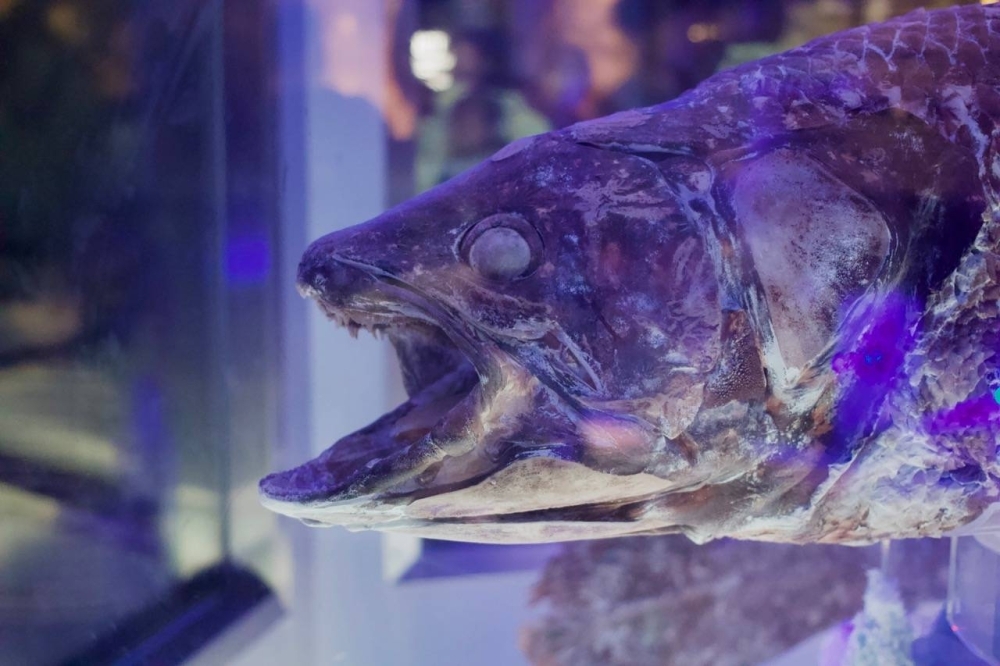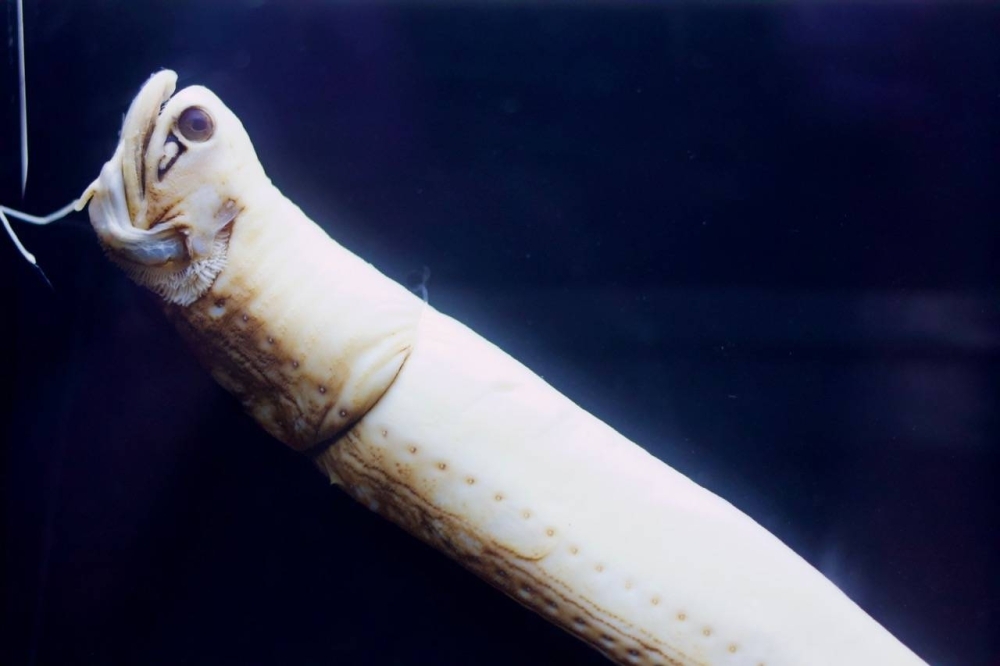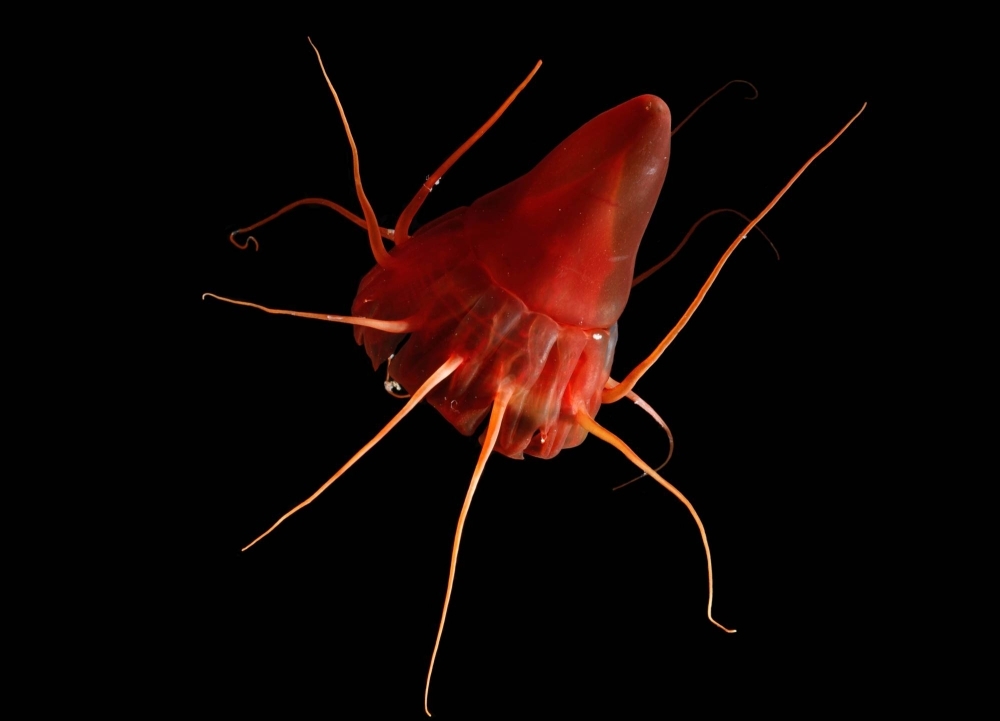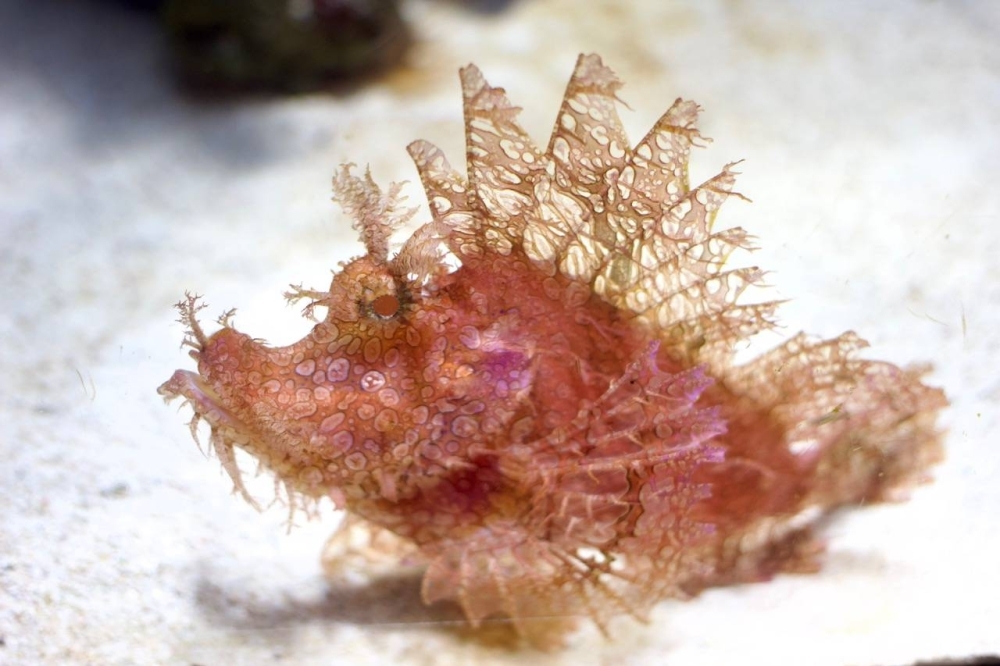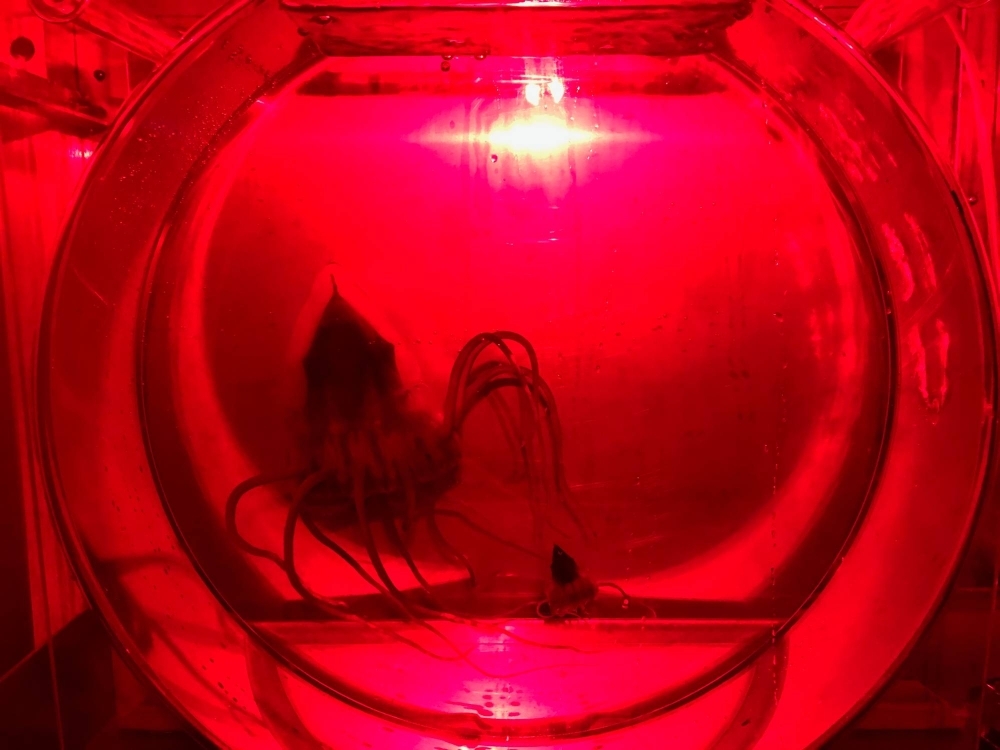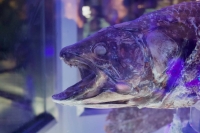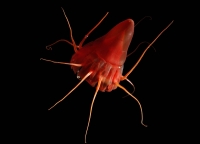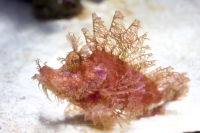The supple little creatures look like ghosts as they wriggle around in the darkness. When they move closer into frame, it’s almost as if they’re flashing goofy grins for the camera.
While scientists once believed it was impossible for fish to survive in the punishing conditions below 8,200 meters, the snailfish, which resides some 8,336 meters underwater and was captured on video by researchers during a 2022 expedition in the Izu-Ogasawara trench southeast of Japan, reinforced just how much life exists deep below the surface — and how little we know about it.
In a way that hidden things often do, deep-sea fish fascinate us. Deep-sea fish, with their alien forms, are, all at once, terrifying, beautiful and mysterious. These fish are, in their own way, brilliant organic forms, withstanding tons of pressure (in some places the equivalent force of 100 adult elephants standing on someone’s head). Yet somehow the soft, intricate bodies are able to thrive under these conditions.
At the Numazu Deep Sea Aquarium in Shizuoka Prefecture, which purports to be the world’s first museum centered on deep-sea species that live more than 200 meters below the sea surface, there is an array of different underwater worlds on display. This attracts large weekend crowds who peer through little glassy windows at slices of habitats typically out of human view — a world where creatures glow underwater and scuttle across seabed floors.
But this world may be under threat, as demand for metals such as lithium and nickel — used in the production of smartphones, batteries and military weaponry — has driven a rush to take a stake in the seabed, with Japan being a major advocate of deep-sea mining.
Deep-sea landscape
The ocean covers around 70% of the Earth’s surface with an average depth of 3,682 meters, but relatively little is known about it. There are estimated to be somewhere between 700,000 and 1 million different species in the ocean, with almost 2,000 new underwater species accepted by the scientific community each year, according to the U.S. National Oceanic and Atmospheric Administration.
While underwater conditions are extreme, many deep-sea creatures are able to survive through a symbiotic relationship with their ecosystems. As sunlight cannot penetrate the ocean depths, hydrothermal vents, deep below the water’s surface, jet up energy from cracks in the seafloor. While these vents are immensely hot and have a high pressure, the surrounding areas are home to a variety of unique undersea life, from worms to crabs.
But the chemical-rich patches of water around the vents are attractive for deep-sea mining — which the International Union for Conservation of Nature (IUCN) defines as the removal of minerals and metals at depths of more than 200 meters — as countries look to strengthen and take greater control of their supply chains.
Japan, which is reliant on mineral imports, has over the years looked to deep-sea mining as part of a national security push and as a means to being more self-sufficient. The country has already carried out numerous tests.
In 2020, using a Japan-built crust-excavation testing machine, the Japan Organization for Metals and Energy Security (JOGMEC) harvested 649 kilograms of cobalt and nickel-rich seabed crust. It is thought that the test area contains enough cobalt to meet Japan’s demand for 88 years and enough nickel to meet its demand for 12 years.
But academics in the country have warned of the potential for environmental harm. The mining extraction process and destruction of key hydrothermal vents could affect those hundreds of kilometers away, according to research by academics at the Okinawa Institute of Science and Technology, while analysis of seabed ecology undertaken following the 2020 drilling by JOGMEC showed a decrease in marine life such as fish and shrimp at the site a year on.
In November 2023, Vanessa Stenvers, a doctoral researcher at the GEOMAR Helmholtz Centre for Ocean Research Kiel, and Henk-Jan Hoving, the working group leader on deep-sea biology at the same institution, published a paper detailing their finding that a representative organism, the helmet jellyfish, experienced acute physical effects from short-term exposure to suspended sediment, which could be caused by mining.
Stenvers says that when it comes to deep-sea mining, “most research available has focused on animals living on the seafloor, which is where the impact will be direct.” But as the process involves sediment being moved around the ocean floor and being pumped back into the water, the impact will extend beyond, posing a risk to other deep-sea creatures too.
“You have these very delicate animals with gelatinous tissues, or filter-feeding lifestyles, or they create mucus to capture their food, so the hypothesized impacts could be large, which is what we showed in our paper,” Stenvers says, noting that in addition to noise and light pollution and other stressors, “sediment plumes will not only affect the animal directly ... but also indirectly, for instance, visual communications — there's a lot of bioluminescence in the deep sea.”
Japanese politicians have expressed awareness of the potential impacts. In a February meeting with International Seabed Authority (ISA) Secretary-General Michael Lodge, Foreign Minister Yoko Kamikawa spoke about “the importance of the development of regulations on the exploitation of mineral resources ... that take into account both conservation of the marine environment and use of marine resources in activities” and “emphasized that Japan will contribute constructively to the discussion,” according to a ministry readout.
Big decisions
Pradeep Singh, lead of a deep-seabed mining ecosystems specialist group at the IUCN, says there is still too little information when it comes to deep-sea mining and its risks for informed decisions to be made on the political level. At the same time, there is much scientific research suggesting a concerning outcome, he says.
“What we do know is that the implications of deep-seabed mining are going to be quite severe. Science is already able to say (we should) be prepared for large-scale devastation, particularly on the seabed,” Singh says, noting that there would be further impacts from other aspects of the process, including the discharge of waste following processing on board.
Advocates of deep-sea mining have argued that it will help with the transition away from fossil fuels, with minerals necessary for technologies such as batteries and solar panels waiting to be extracted from far below the waves. They have also argued that on-land mining is more harmful, impacting Indigenous people and rainforests, but not everyone is convinced.
The economics of deep-sea mining are uncertain, but if it does end up being cheaper than on-land mining, that could lead to an intensification of the latter.
“We'll just have more of the same old problems we see on land, but new problems at sea,” Singh says.
International bodies and countries have also expressed their concerns, echoing scientists. Indeed, a 2020 resolution on deep-seabed mining by the IUCN — 14% of whose members are state or government agencies — called for a moratorium on deep-seabed mining and the issuing of new exploitation and new exploration contracts until “the environmental, social, cultural and economic risks of deep-seabed mining are comprehensively understood” and “policies to ensure the responsible production and use of metals” are implemented.
And in February, the European Union parliament rebuked Norway for its green-lighting of deep-sea mining the previous month.
Against this backdrop, the ISA, which oversees the deep sea and its mineral resources, has not yet finalized rules for the practice.
Still, the ISA has entered into contracts for deep-sea exploration for a range of metals with a number of companies, including JOGMEC. Lodge said in February that it “seems to be inevitable” that countries will begin deep-sea mining, although the timeline for when that could happen remains unclear.
With milestones like the development of regulations and processes still not agreed upon, some experts, such as Singh, believe that deep-sea mining may actually be some way off.
In the meantime, the argument for avoiding deep-sea mining altogether has gained broader traction amid the development of electric vehicle batteries based on alternative minerals, with sodium replacing lithium.
What lies beneath
The creatures that inhabit the deep sea are of interest to research for a plethora of reasons and could offer all manner of insights, says Hoving.
“There is an incredibly unexplored reservoir of biodiversity in the deep ocean. These animals have evolved all these unique characteristics under unique selective pressures that we don't know much about,” he says.
Lessons from their chemicals to biomimicry mechanisms could have applications on land.
“There are all these organisms, but we can't learn from them if we don't know that they exist,” he says, noting “the deep sea has a fundamental role in our life on Earth. We need to inform ourselves before we start exploiting it, because as soon as we start disturbing it, without any prior knowledge, returning it to its original pristine state is exceptionally hard.”
While Stenvers says we typically think of deep-sea fish as strange alien-like creatures, given their populations and diversity, perhaps they are not the strange ones.
“They are actually much more abundant on Earth than we are,” she says. "So who really are the alien inhabitants?"




